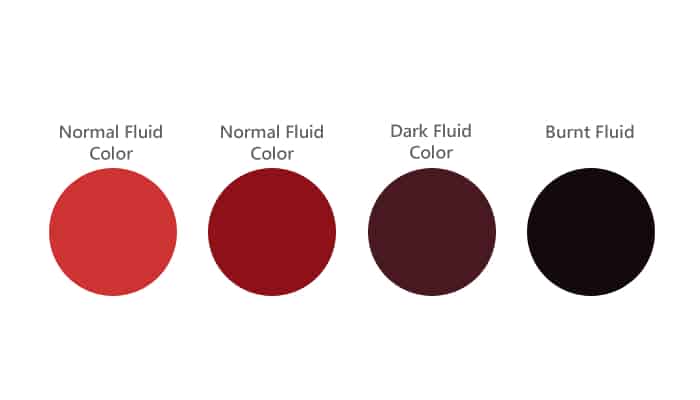Understanding Transmission Fluid Specifications
When it comes to maintaining your 1997 Ford Escort, one of the most critical components to keep an eye on is the transmission fluid. Using the correct type of transmission fluid is essential for ensuring that your vehicle operates smoothly and efficiently. Let’s dive into the specifics of what you need to know about the transmission fluid for your Escort.
Manufacturer’s Recommendations
| Popular posts |
|---|
| What to do to prolong the life of your manual gearbox |
| Automatic transmission: what it is, how it works |
Ford has specific recommendations for the type of transmission fluid to use in the 1997 Escort. According to the manufacturer, the recommended fluid is:
– Type: MERCON Automatic Transmission Fluid
This recommendation is based on extensive testing and engineering to ensure optimal performance and longevity of the transmission. Using the right fluid is not just a suggestion; it’s a necessity for the health of your vehicle.
Why MERCON?
You might wonder why MERCON is the go-to choice. Here are a few reasons:
- Viscosity and Performance: MERCON fluid has the right viscosity to ensure that the transmission operates smoothly under various temperature conditions. It provides the necessary lubrication to prevent wear and tear.
- Compatibility: This fluid is specifically formulated to work with the components in Ford transmissions, reducing the risk of damage that can occur from using incompatible fluids.
- Heat Resistance: MERCON is designed to withstand high temperatures, which is crucial for the longevity of your transmission, especially if you often drive in stop-and-go traffic or tow heavy loads.
Fluid Characteristics
Understanding the characteristics of MERCON fluid can help you appreciate its importance:
- Color: Typically, MERCON fluid is a bright red color. This helps in identifying leaks and monitoring fluid condition.
- Odor: It has a distinct smell, which can help you detect any issues. If the fluid smells burnt, it’s a sign that it needs to be changed.
- Consistency: The fluid should be smooth and not gritty. If you notice any particles or a thick consistency, it’s time to replace it.
Where to Find MERCON Fluid
You can find MERCON transmission fluid at most auto parts stores, and it’s often available in both quart and gallon sizes. Just make sure to check the label to confirm that it meets the MERCON specifications.
Using the right transmission fluid is crucial for the performance and longevity of your 1997 Ford Escort. Stick to the manufacturer’s recommendations, and you’ll keep your transmission running smoothly for years to come.
Recommended Oil Brands for Your Transmission Fluid
When it comes to keeping your 1997 Ford Escort running smoothly, choosing the right transmission fluid is only part of the equation. The brand of fluid you select can make a significant difference in performance and reliability. Based on owner feedback and experiences shared in automotive forums, here are some of the top recommended brands for MERCON transmission fluid.
Top Recommended Brands
Here’s a list of brands that consistently receive positive feedback from Ford Escort owners:
- Ford Motorcraft
- As the manufacturer, Ford Motorcraft’s MERCON fluid is often the top choice among owners. It’s formulated specifically for Ford vehicles, ensuring compatibility and performance.
- Valvoline
- Valvoline’s MERCON fluid is well-regarded for its high-quality formulation. Many users report smoother shifting and better overall performance after switching to Valvoline.
- Castrol
- Castrol is another brand that has garnered a loyal following. Owners appreciate its reliability and the fact that it meets or exceeds the MERCON specifications.
- Mobil 1
- Mobil 1 is known for its synthetic oils, and their MERCON fluid is no exception. Users have noted improved performance and longevity, especially in older vehicles like the Escort.
- Royal Purple
- Royal Purple is often praised for its high-performance fluids. While it may be on the pricier side, many owners believe the benefits justify the cost, citing enhanced shifting and reduced wear.
Owner Experiences and Feedback
Many owners have taken to forums to share their experiences with different brands of transmission fluid. Here are some common themes and insights:
- Performance Improvements:
- Several owners reported noticeable improvements in shifting quality after switching to premium brands like Mobil 1 and Royal Purple. Users noted that their transmissions felt more responsive and less prone to slipping.
- Cost vs. Quality:
- While some owners opt for budget brands to save money, many have expressed that investing in a reputable brand pays off in the long run. They often cite fewer issues and longer intervals between fluid changes.
- Compatibility Issues:
- A few owners have reported problems with lesser-known brands that claim to meet MERCON specifications. These issues often involve poor performance or even transmission damage, reinforcing the importance of sticking to trusted brands.
- Availability:
- Most of the recommended brands are widely available at auto parts stores and online, making it easy for owners to find the right fluid without hassle.
Final Thoughts from the Community
The consensus among Ford Escort owners is clear: using a high-quality MERCON transmission fluid from a reputable brand can significantly enhance the performance and longevity of your vehicle’s transmission. Whether you choose Ford Motorcraft for its OEM reliability or opt for a synthetic option like Mobil 1 for added performance, the key is to ensure that the fluid meets the necessary specifications. Always check reviews and community feedback to make an informed choice that suits your driving style and needs.
Change Interval for Transmission Fluid
Maintaining your 1997 Ford Escort’s transmission fluid is crucial for ensuring smooth operation and longevity. Knowing when to change the fluid can save you from costly repairs down the line.
Recommended Change Intervals
The general consensus among automotive experts and manufacturers is that transmission fluid should be changed every 30,000 to 60,000 miles (approximately 48,000 to 96,000 kilometers). However, this can vary based on driving conditions and habits. Here’s a breakdown:
- Normal Driving Conditions: If you primarily drive in moderate conditions—like highway driving with minimal stop-and-go traffic—aim for the 60,000-mile mark.
- Severe Driving Conditions: If you frequently drive in heavy traffic, tow heavy loads, or operate in extreme temperatures, consider changing your fluid closer to the 30,000-mile mark.
- Owner’s Manual: Always refer to your owner’s manual for specific recommendations tailored to your vehicle.
Partial Transmission Oil Changes
In many cases, a complete transmission fluid change may not be feasible without removing the transmission from the vehicle. This is where partial transmission oil changes come into play.
What is a Partial Transmission Oil Change?
A partial transmission oil change involves draining a portion of the old fluid and replacing it with new fluid. This method is often more accessible and less labor-intensive than a full fluid change.
Benefits of Partial Changes
- Cost-Effective: Partial changes are generally less expensive than full changes, making them a more budget-friendly option for regular maintenance.
- Less Downtime: Since partial changes can often be done quickly, you won’t have to spend as much time without your vehicle.
- Improved Fluid Quality: Regular partial changes can help maintain the quality of the transmission fluid, preventing the buildup of contaminants and ensuring better performance.
Statistical Justification
According to the American Transmission Repair Association, regular maintenance, including fluid changes, can extend the life of your transmission significantly. They report that vehicles that undergo regular fluid changes can last up to 100,000 miles longer than those that do not.
Additionally, a study by the Automotive Service Association indicates that nearly 70% of transmission failures are attributed to overheating and fluid breakdown. By regularly changing your transmission fluid—whether through partial or full changes—you can mitigate these risks and keep your vehicle running smoothly.
In summary, while a full transmission fluid change is ideal, partial changes can be a practical alternative that helps maintain your vehicle’s health without the need for extensive labor. Always consult with a qualified mechanic to determine the best approach for your specific situation.
What Color Should Transmission Fluid Be?


